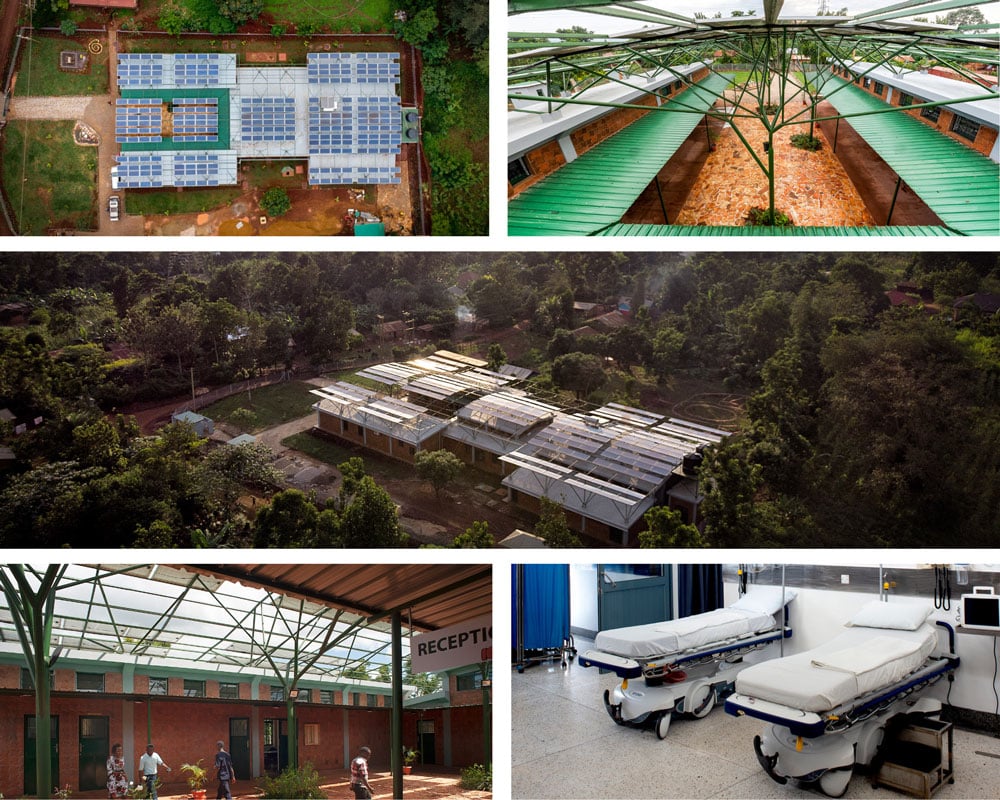In the heart of Uganda, a revolution is taking place. Amid the verdant landscapes and the vibrant culture, a remarkable transformation is happening within the healthcare system.
At the forefront of this green revolution is the Mount Sinai Kyabirwa Surgical Facility, a solar-powered center that stands as a beacon of sustainable and locally-sourced development.
Uganda, a country in East Africa, is home to over 40 million people. Despite the government introducing free universal healthcare in 2001, accessibility remains a significant issue, especially in remote and underserved areas. To bridge this gap, innovative healthcare solutions were needed.
Enter the Mount Sinai Kyabirwa Surgical Facility.

The solar panels stand on a steel framework on the concrete roof, which is supported by another steel frame. (dezeen)
This healthcare center is not just a building but an embodiment of sustainability, resourcefulness, and innovation. Its design draws inspiration from the region’s abundant banana plants.
Architects designed the solar panels to mimic banana leaves, gathering the sun’s energy while providing shade – a perfect marriage of functionality and aesthetics.
But the center’s commitment to utilizing local resources goes beyond just its architecture. The facility was constructed using red clay bricks, sourced from the region and made by local talent.
This choice supported the local economy, enhanced the building’s aesthetic, and provided natural ventilation, reducing the need for energy-consuming air conditioning systems.
Moreover, the facility stands tall as a testament to technological advancement. With twenty miles of underground fiberoptic cables, surgeons from as far as New York can offer live surgical consultations, allowing for real-time guidance during operations.
The center is also conscientious of its water use – a critical consideration in an area where water access can be challenging.
It utilizes a sophisticated water system to purify well water, making it safe for consumption. Additionally, it collects rainwater for various purposes, including flushing toilets and watering the vegetable garden, which supplies food to patients and staff.
Looking ahead, the surgical center is just the beginning. More self-sustaining medical facilities are under development, including a children’s hospital and a maternity unit, to extend healthcare services to more people in Uganda’s underserved regions.
The Mount Sinai Kyabirwa Surgical Facility is more than a healthcare center. It is a promise of a sustainable future and a testament to the potential of green healthcare.
Its existence challenges the status quo, pushing boundaries of what we perceive as possible in healthcare provision. And, above all, it serves as a beacon of hope, leading the way in a green revolution in healthcare in Uganda and beyond.












Comments